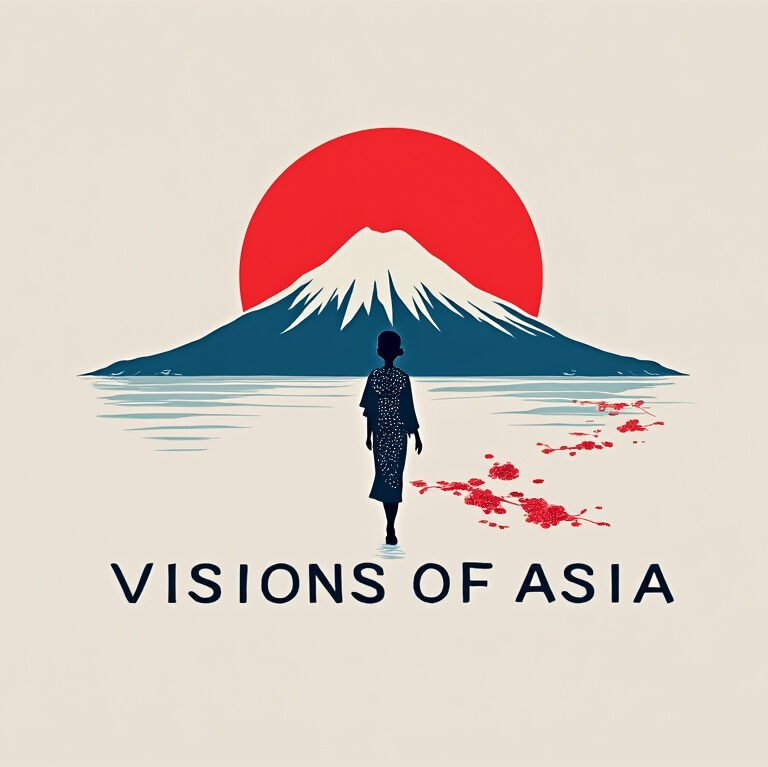The Hong Kong protests took a familiar but delicate turn on Sunday 14 July, when I covered the protests of Shatin. Everything went fine, until the moment that one masked woman asked me if I was “press” as I was flying my drone. As I confirmed I was not she became aggressive and said “no photo” and told me to stop right there. I attempted to explain that I was a blogger, and even offered to show her my blog, but she would not let me land my drone first.
Paranoia and stupidity
That particular woman, was extremely paranoid, and eventually as I managed with some difficulty to show her my web site, she continued demanding for me to stop photographing, without allowing me to land.
To be honest, the terms “paranoia” and “stupidity” are quite justified, as that woman never allowed me to land my drone as my battery was getting low. Later, the whole group set upon me, and it is only my Western appearance that probably avoided this escalating to physical violence.
Other protesters were also initially aggressive, and any attempt to dispel their misconceptions fell through. When I pointed out that I was not masked: “Ah, police, they don’t wear mask too!”. It became a bit impossible to dialogue, but then, some of the more reasonable protesters invited me to leave, satisfied that I was not part of the police.
A lot of ignorance on medias
The protesters (who at times, have been diffident from medias as well) expressed some weird misconceptions, alleging that medias “blurred” their faces when posting photographs of protesters. Obviously, these guys probably never saw a single picture published in a media, especially about the invasion of the LegCo. In other medias, photos posted about Shatin did not take any particular precaution to preserve anonymity of protesters.
The other point which was difficult to work with was that social media and digital medias are also worthwhile channels to let people know of their message. The masked woman kept telling me that if I was “with them”, I would not take pictures.
But that is again a misconception about medias. Medias should be objective to a fault, reporting about truth, not being channels for propaganda by either side. This holds true also for bloggers and/or social media. I am not “with someone”, but I tell what I see.
Reporting on the barricades, a risky endeavour
When protesters run around with barricades, dismount public constructions and establish barriers, they are doing something objectively. And medias or the public at large have a right to observe and/or criticize. Unfortunately among the students present there, few were very acquainted with the role of medias or freedom of expression. They begrudgingly admitted that freedom was for everyone, but their chief concern was being identified and being arrested.
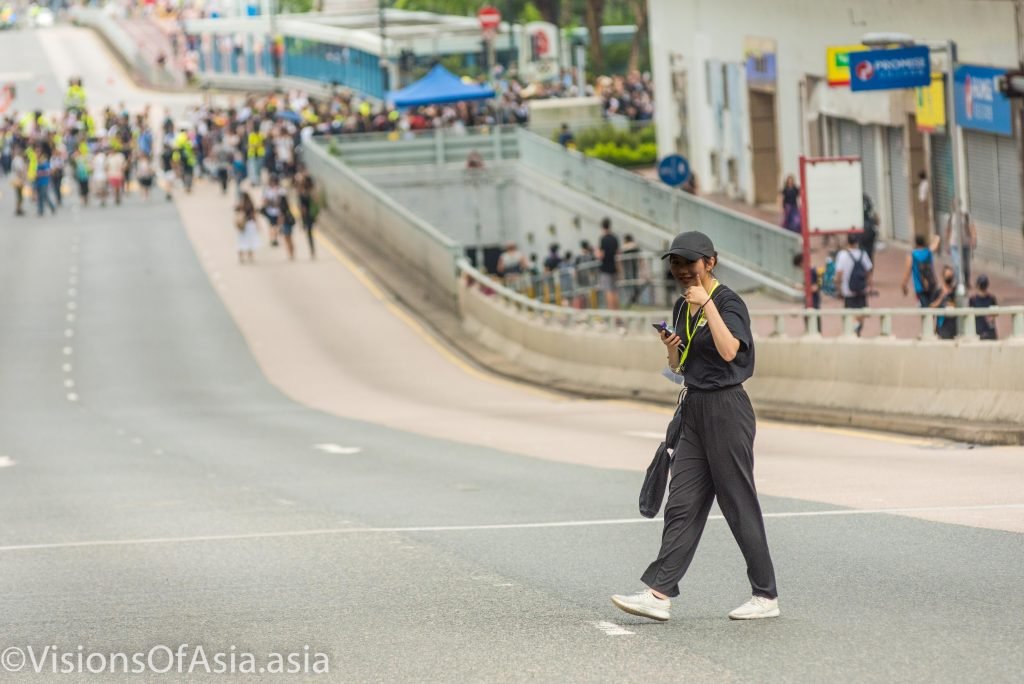
My explaining them that any person fighting for democracy always had to take a risk as did Gandhi or Mandela, fell in deaf ears, but at least it convinced them I was not “a risk” as some tried to put it. Let us not even talk about their delusion that medias “obscure” their faces.
The worrying part was the convergence of so many protesters on me in a sort of mob-like movement. I guess if I looked Chinese, I might have been treated otherwise badly as happened at the LegCo.
However, in the end, many of them apologized if they offended me, shook my hand and also invited me to wear a helmet to protect myself.
Leaderless and decisionless movement
Many protesters take pride in pointing out that they are a “leaderless” movement, but the clear result of this was chaos in their organization and decision-making process. I could see protesters rushing makeshift barricades to one end of the bridge… Then reversing the direction upon a call by someone else. And further to that, while a barricade may have provided the location for making a standoff, it seems protesters were just happy to retreat whenever riot police appeared, leaving you somehow doubtful as to why doing all this in the first place.
While operationally, the confrontation has served no real goal (no government target in Shatin), it ultimately probably served as an additional means to keep the pressure up on China. They will have to cede something as the summer break of students ensures that every week-end, there can be a few thousands in the streets.
Another important protest
My post would not be complete if I did not talk about the main event, namely the tens of thousands of protesters who marched peacefully in Shatin against the Extradition Bill.
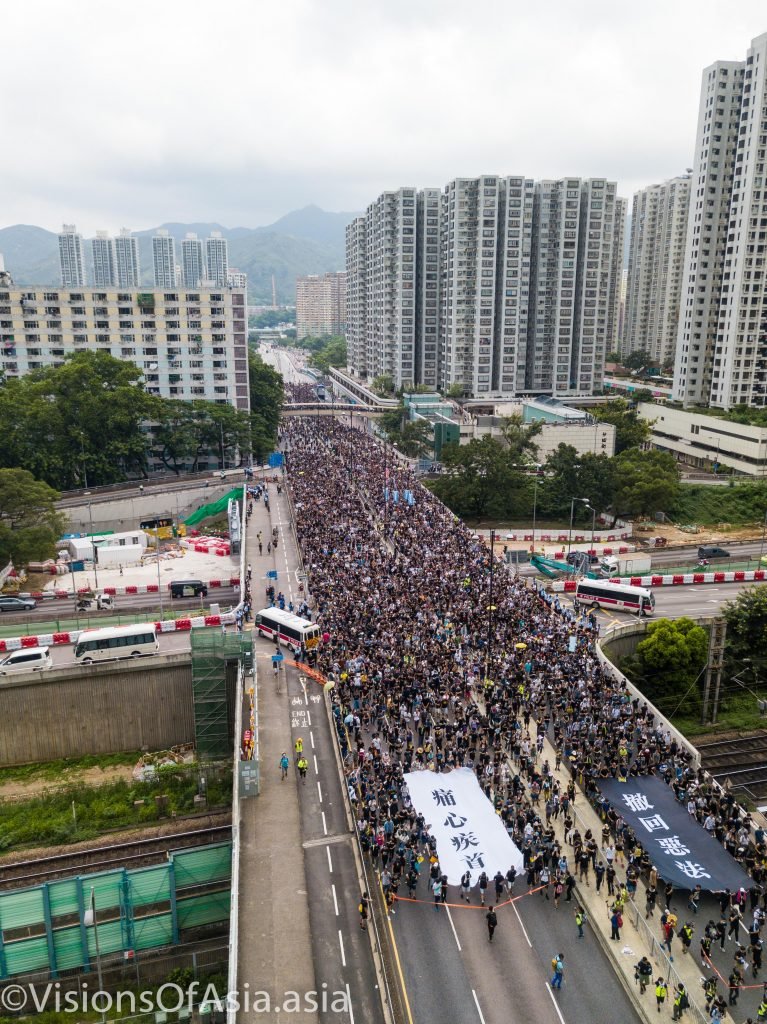
While not as important as previous protests, such as the “2 million” protest one month ago, a number of people however showed up, often with full families. This main part was absolutely peaceful.
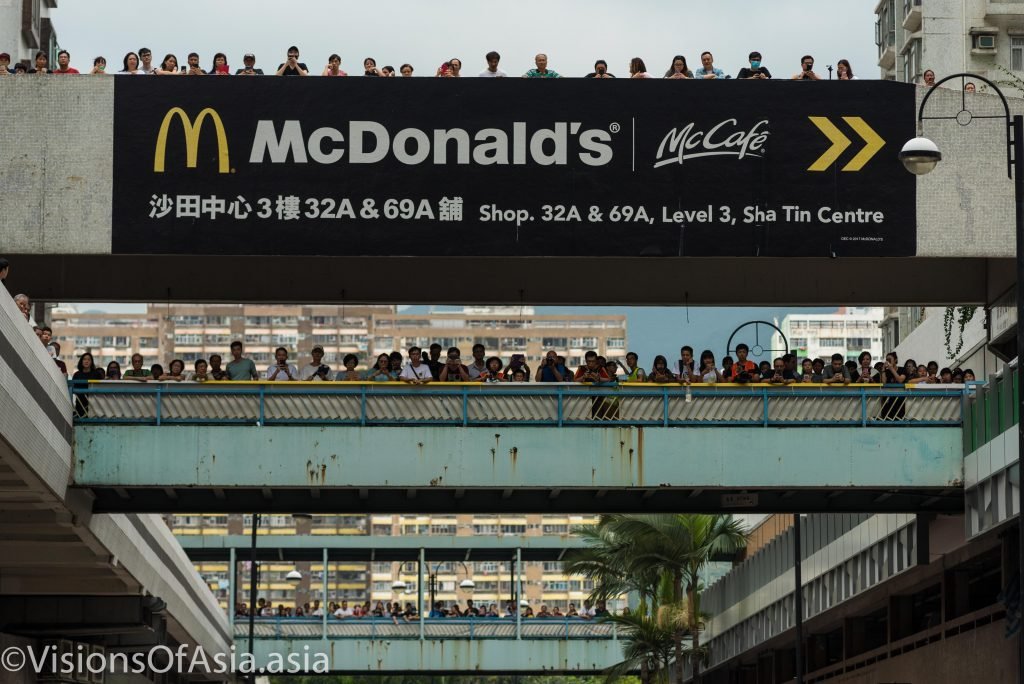
At the same time, an article appeared on the Financial Times, indicating that Carrie Lam, the chief executive wanted to resign but was prevented from doing so by Beijing who wishes her to “clean up her mess”. As the situation is deadlocked and Beijing seems decided to wait out the protests, the sole option to avoid playing the clock seems for the protesters to up the ante.
May 1968 all over again?
It seems increasingly, protesters also seek confrontation with the police for the sake of confrontation. The protesters to whom I talked could not identify any single reason for these confrontations, as there are no objectives around. Their sole goal (once the confrontation started) was to “slow down” the riot police.
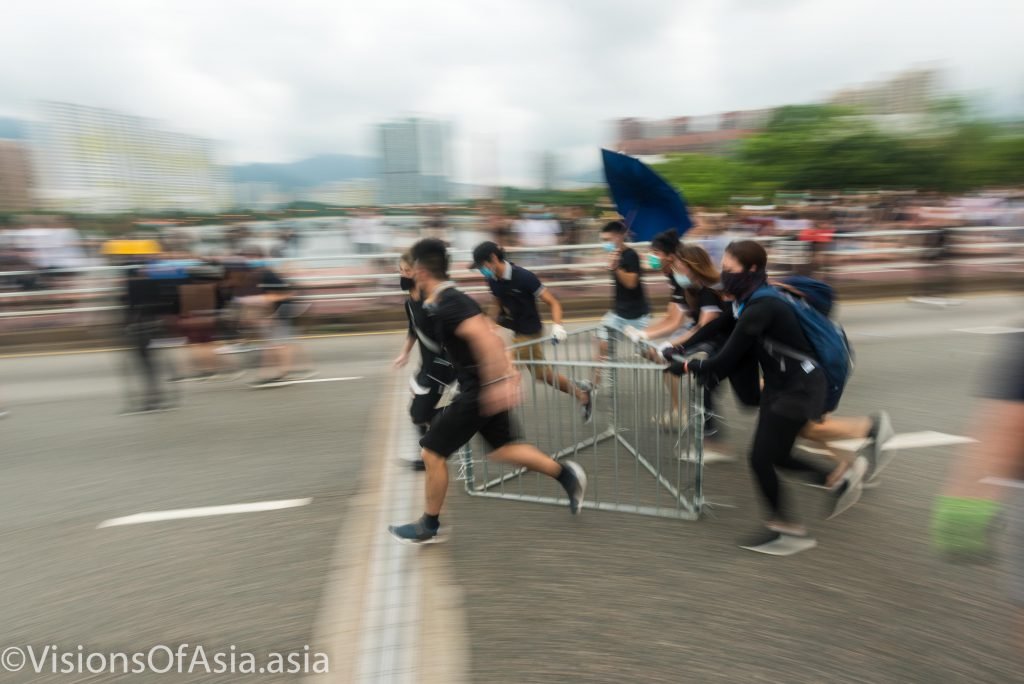
In that, it seems, the sense of commonality, shared goals (even if they don’t have a clue which these are) encourages students and youngsters to continue in their confrontation with the police, which increasingly are turning violent.
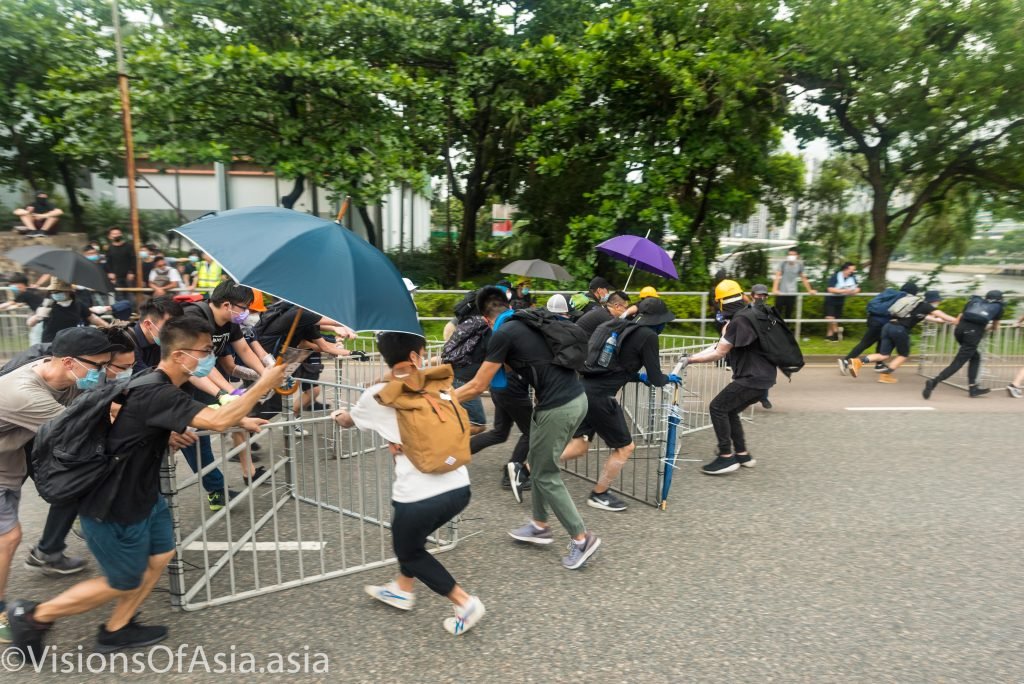
The police itself, has been seriously escalating its level of repression, but shows also some incredible ignorance in maintaining order. While clearing the last remnants of the protest in the night, the police entered a mall (closed environment) and further attempted to lock in protesters, leaving no way to exit. This is a major error in policing protests, especially as most protesters were on their way back (they all go home with the last MTR).
With the level of violence observed (policemen bending wrists, pepper spraying generously, beating up protesters, and protesters setting in dozens upon a fallen policeman), concerns are rife that the way forward is only more violence.
What demands?
Currently, the protesters have kept five main demands:
- Withdrawal of the Extradition Bill;
- Resignation of Carrie Lam;
- Retraction of characterization of protests as “riots”;
- Independent inquiry into the police action;
- Unconditional liberation of all protesters arrested
So far, these demands have once again been joined by more diffuse demands such as universal suffrage for all, end to parallel trading, etc.
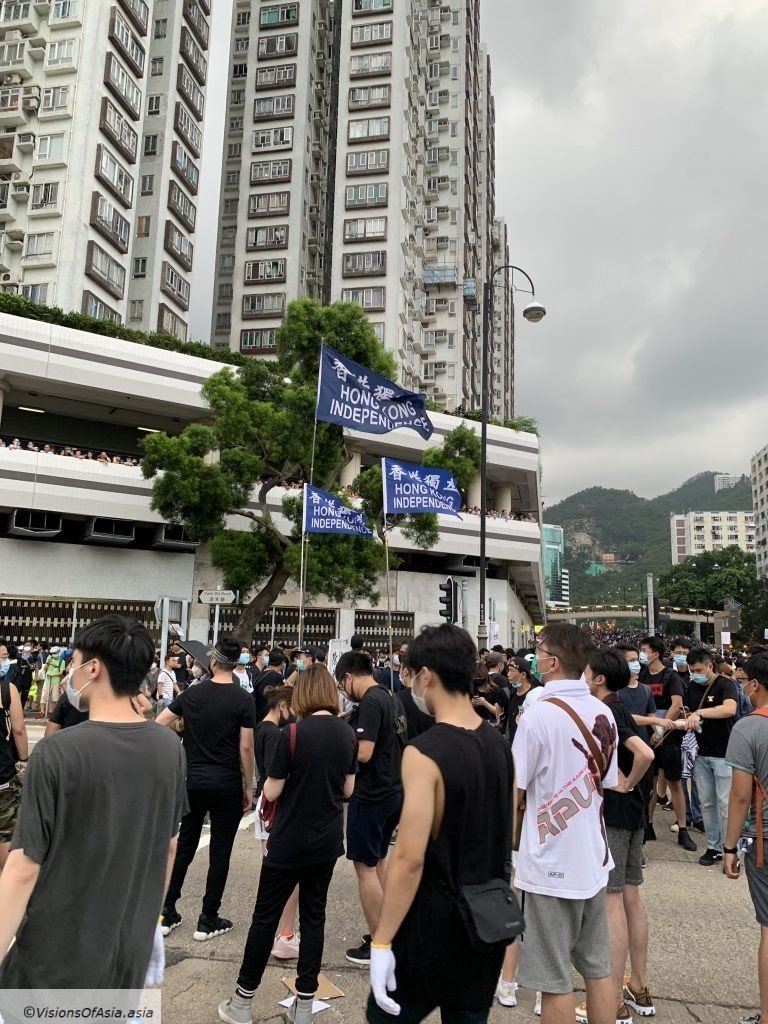
And the idea of the independence of Hong Kong has once again come out to the forefront with these banners flown during the Shatin protest. It is however highly unlikely that Beijing allows any such move without a strong repression. Protesters may possibly aim for universal suffrage, which seems a bit more of a realizable goal, now that Beijing seems to be somehow boxed in with the intense mobilization.
Ceasing coverage?
Today, the protesters took me to task for being a photographer on their protest. If they really want to fight for democracy, they don’t have a clue about the suffering that might ensue, nor do they seem very prepared to this level of sacrifice. For now, it is a summer of games for students; only time will tell if these games translate into real gains for Hong Kong.
It should be mentioned that I did not wear yellow vest or any identification as a journalist, as I did not want to have a quality which I did not have. It might have been a mistake, but at the time, I was clearly not working for printed or broadcast medias.
In the months after this incident, I identified myself as a journalist, and have never encountered issues since with protesters or police regarding my identification. I need to mention that a while later, I encountered one of the kids who had stopped me in Shatin, but elsewhere, in Causeway Bay.
